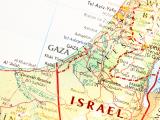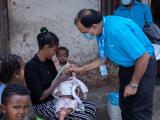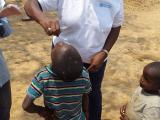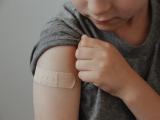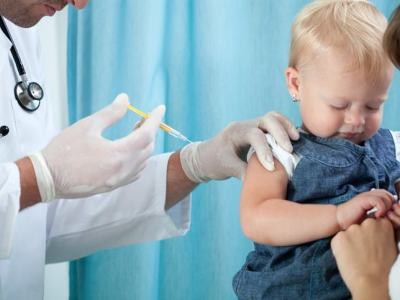Oct 25, 2012 (CIDRAP News) – The world has the tools to eradicate polio, but it's unclear if countries have the political and social will to fully implement and finance emergency plans, a spokesman for the World Health Organization's (WHO's) Global Polio Eradication Initiative (GPEI) said yesterday to mark World Polio Day.
The observance is held on Oct 24, the birth date of Jonas Salk, the US virologist who invented the polio vaccine.
Oliver Rosenbauer, spokesman for GPEI, said in a United Nations (UN) press release yesterday that the virus has repeatedly spread to polio-free areas, causing devastating outbreaks. Last year the WHO removed India from the list of countries with active disease transmission, leaving only three endemic countries remaining: Nigeria, Afghanistan, and Pakistan.
"If we don't finish the job now we could see within the next decade 200,000 new cases every single year all over the world," he said. "Given that we are under 200 cases now, we consider this a true humanitarian catastrophe that has to be averted at all costs."
According to a WHO estimate, 4,000 people have been deployed to help the endemic countries with GPEI vaccine campaigns.
Anthony Lake, who heads the UN Children's Fund (UNICEF), said in the statement that World Polio Day is a time to celebrate progress and a reminder that more work is needed to eliminate the disease. "We can see before us the finish line: the eradication of polio. But World Polio Day is also a sobering reminder that, as in many long distance races, the last mile is the hardest one."
In a separate statement yesterday, UNICEF commended industry for its contributions to global polio eradication efforts, especially for the work it did shoring up a 410-million-dose gap in 2012 and staving off a 300-million-dose gap for 2013.
Shanelle Hall, director of UNICEF Supply, said oral polio vaccine shortfalls from a few suppliers have posed a challenge. When UNICEF issued an oral polio vaccine (OPV) tender covering 2013 through 2017, the response from manufacturers brought to light a 300-million-dose gap for the first half of 2013, which would have seriously affected polio campaigns that were planned, UNICEF said.
Collaboration by industries has increased and fast-tracked availability and coordinated efforts with WHO to prequalify new products and adjust schedules, Hall said. "Sufficient OPV will now be available to meet the programmatic requirements for the period," she added.
UNICEF also praised manufacturers' work on affordable pricing, and it said costs savings over the next 5 years would be equal to nearly 100 million doses.
In other polio developments, global health experts who track polio transmission today reported encouraging patterns in Chad, one of four African countries that were polio-free but have seen reestablished transmission. The authors, from global health groups, including the US Centers for Disease Control and Prevention (CDC), reported their findings in Morbidity and Mortality Weekly Report (MMWR).
Chad saw transmission after importations of wild poliovirus 3 (WPV3) and wild poliovirus 1 (WPV1) from Nigeria in 2007 and 2010, respectively. The authors noted that polio regained a foothold in Chad due to chronically low immunization coverage and low-quality supplementary immunization activities.
Though polio cases increased fourfold in Chad from 2010 to 2011, cases dropped 96% from January to August this year compared with the same period in 2011, the group reported, noting that circulation of WPV3 might have been interrupted. The authors noted that WPV circulation in 2012 has continued only in the three endemic countries and in Chad.
They said the improvements have followed considerable investments by Chad's health ministry in 2011 and GPEI partner efforts to boost personnel, training, supervision, and political oversight and to focus on missed populations.
Remaining challenges include increasing the quality of disease surveillance, the group said. The authors emphasized that Chad remains at risk for new importations and outbreaks.
See also:
Oct 24 UN press release
Oct 24 UNICEF statement
Oct 26 MMWR report

